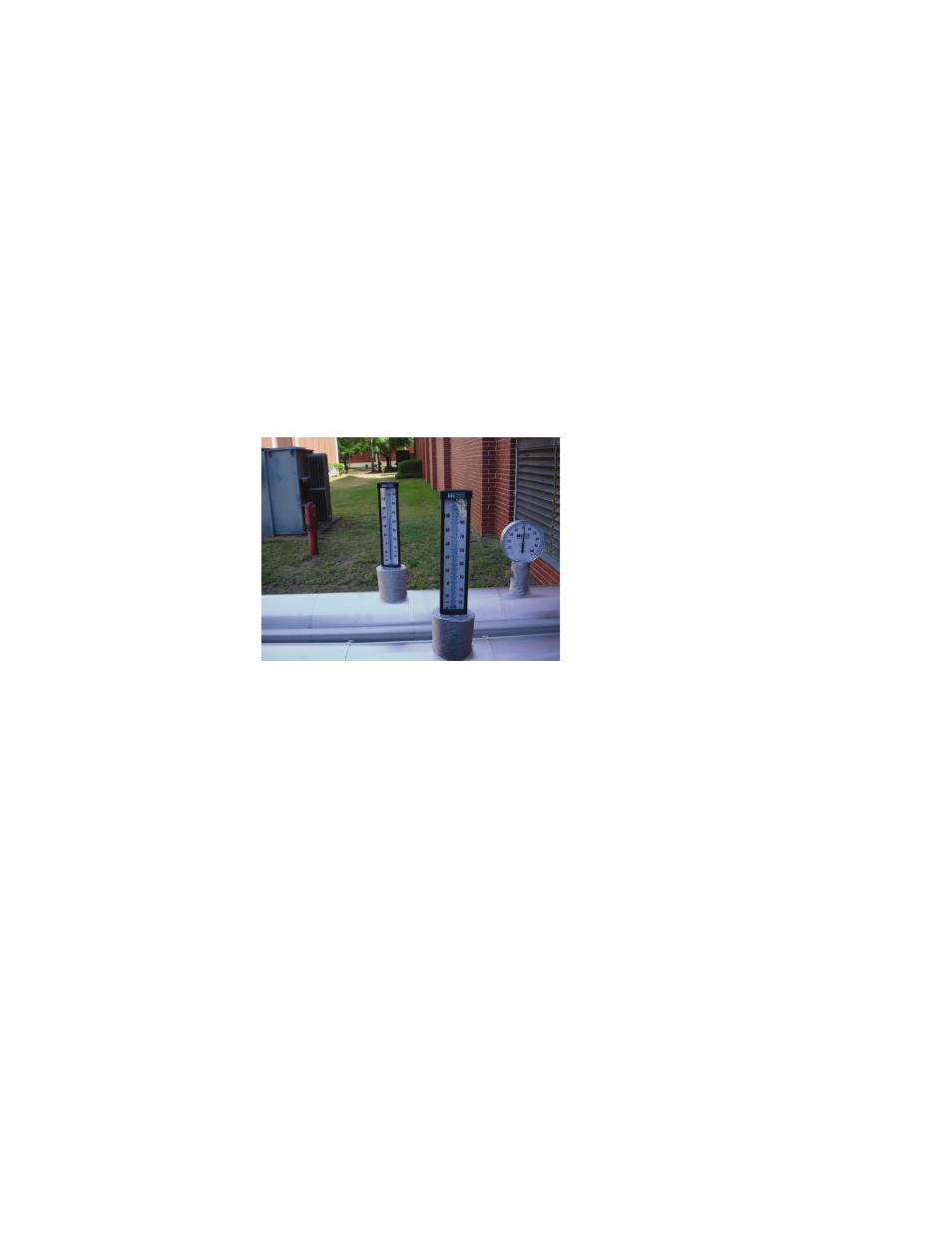Retrotec USACE User Manual
Page 196

D66 ENERGY & PROCESS ASSESSMENT PROTOCOL
has a design entering and leaving chilled water temperature based on a spe-
cifi c fl ow rate. When the system was installed, balanced, and commissioned,
valves were set in the distribution piping to provide that desired fl ow to each
user (Figure D114). Over time, these valve settings may have been changed,
equipment requiring cooling may have been removed or added, or something
else may have happened to cause changes in chilled water fl ow. The result is
an imbalanced water fl ow such that some users are getting too much water and
others not enough. The fl ow rate is often higher than needed, causing extra
pumping energy to be used. The chiller is not operating at full capacity, since
the return water is cooler than design, but some of the chilled water users
are not satisfi ed and are too warm, since their water fl ow has been reduced.
Additional chillers and pumps may be required to satisfy the too-warm users,
resulting in additional energy waste.
D.4.2.5 Use of Constant Chilled Water Temperature (Ineffi ciency)
Figure D115. Thermometers in chilled water
lines—check if possible to vary temperature.
The simplest of chiller controls has the chiller set up to deliver a specifi c leaving
water temperature (Figure D115). Users need to know this water temperature
to ensure the desired cooling under the hottest conditions. When conditions
are not quite as hot, the users’ cooling demand is reduced. This results in less
of a chilled water temperature rise than designed or, for a variable fl ow system,
a lower chilled water fl ow. Under these conditions (except when dehumidifi ca-
tion is a concern), the chilled water supply temperature could be raised and
the cooling load satisfi ed. It is easier for the chiller to make warmer chilled
water, thus saving energy for the same amount of cooling. This improvement
in effi ciency equals approximately 2% for each degree Fahrenheit temperature
rise. The chiller manufacturer should be contacted for a more accurate value.
For variable fl ow systems, the savings in chiller electrical use must be com-
pared with the corresponding increase in pumping energy use.
D.4.2.6 Use of Constant Cooling Tower Water Temperature
(Ineffi ciency)
Chiller controls are commonly set to provide a constant condenser water tem-
perature. The cooling towers can accomplish this by modulating the tower’s
fans (Figure D116). If a cooler water temperature is needed, the air fl ow from
